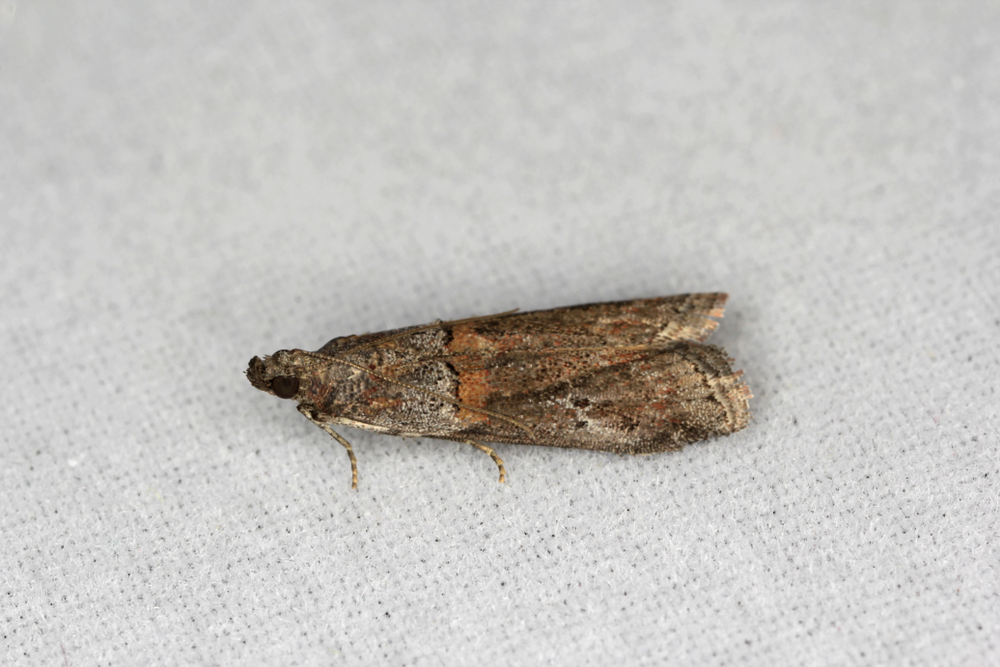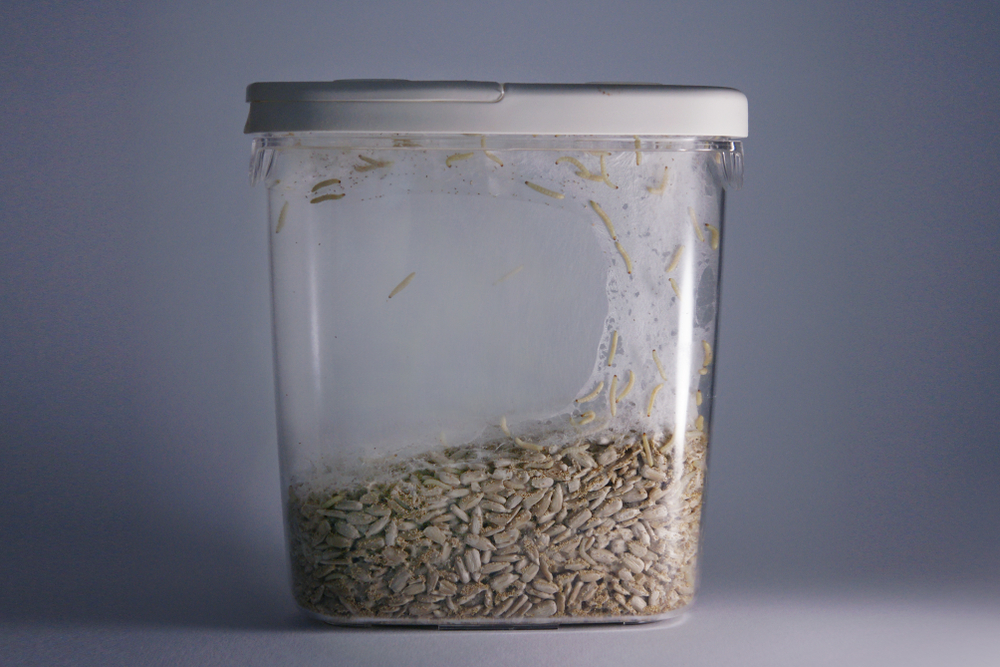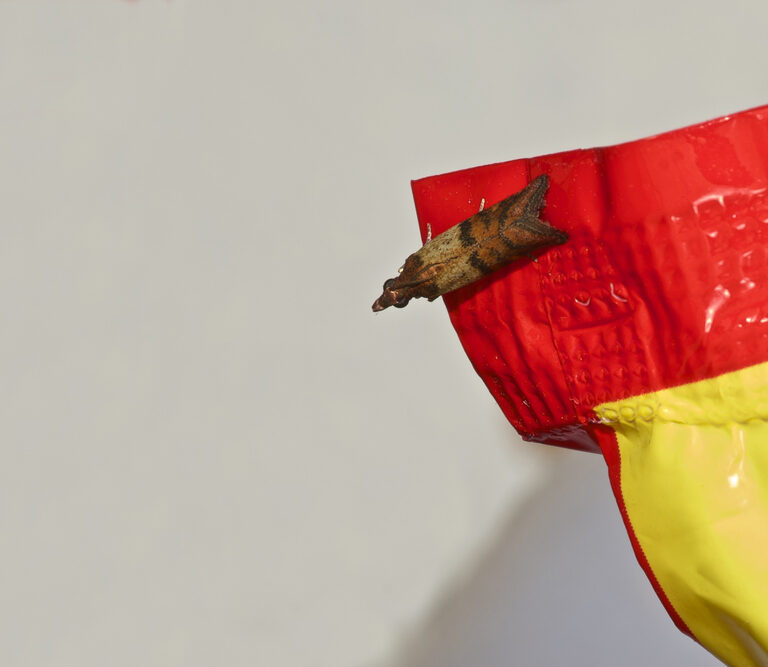There’s nothing pleasant about pantry months. The minute you see one flying, they’ve probably already invaded your food stores. If you’re reading this, you likely had the terrible realization that these unwanted guests have compromised your pantry. The good news is that getting rid of them permanently is easy.
As their name suggests, these moths are a common sight in pantries across America. They’re part of what we know as “stored product pests,” which thrive in places where food is kept. They usually eat and lay eggs in common household products that are left open, mainly dry foods, including cereal, flour, nuts, beans, and pet food. As if that’s not enough, their larvae can easily chew through plastic, spoiling your whole food reserves in a matter of days.
To protect your dried goods from any disgusting pest, especially flying ones, follow the steps below.
The Best Way to Get Rid of Pantry Months
Inspect Your Pantry
First and foremost, you have to survey the damage. Take out all the food from your pantry and get a good look inside. Be on the lookout not only for moths, but their cocoons, as well. These look like small web build-ups, and are usually found in corners or at the opening of food packages.
Now it’s time to toughen up and inspect the food bags and containers. To find out if any products have been compromised, you’ll need to open them. You can often find moths, larvae, or their webs inside bags or boxes. Rest assured that after this, things get easier.
You can either toss out everything found in your pantry, or separate the uncontaminated items, jars, and containers from the infested ones.
Deep Clean
What You’ll Need
- Vacuum
- Rags or paper towels
- Dish soap
- White vinegar
- Bowl or bucket
- Peppermint oil
- Spray bottle
- Moth traps (optional)
It’s time to deep clean your pantry like you’ve never done before. Moths tend to crawl into cracks and other hard-to-spot areas inside wood and walls, so you need to be very thorough. Start by vacuuming the interior, making sure you focus on every corner and surface in there until there are no crumbs, dirt, or dust anywhere.
Next, fill a bowl or a bucket with soap and water, followed by half a bottle of white vinegar. Use a rag or paper towels to thoroughly clean every surface with the mixture. Wait 15 minutes and then use a new rag and clean water to wipe everything down again.
You can use the dish soap and water to wipe down any container, box, and product that has not been compromised. If you have glass jars and cans, rinse them with hot water and soap.
Apply a Repellent
Even after cleaning the pantry, some moths may come back as they emerge from cracks or simply fly back. You have to add a layer of protection by spraying some homemade moth repellant.
Pantry moths are not fond of essential oils, so you can fill half a spray bottle with water, then fill the rest with vinegar and peppermint oil. If you don’t have access to peppermint oil, something like eucalyptus or lavender oil will get the job done. Proceed to shake the bottle a couple of times, then spray the inside of the pantry and other areas where moths were congregating.
Place the Traps
After you have made sure the pantry is clean, you can place some traps as an optional final line of defense for the occasional stubborn moth. Some store-bought moth traps have pheromones that attract them. However, you shouldn’t rely too much on these traps, as they’re good at trapping them once they’re already in your cupboards, but do nothing to prevent them from getting in.
Monitor the Situation
Leave the pantry empty for a couple of days and place the products you decided to keep in a bag outside, so you can take a better look at what’s happening inside the bags. Alternatively, you could place the products in the freezer for a week, which is sure to kill any larvae or eggs in them.
Once a few days have passed without moths, you can place the jars and cans you previously washed back in the pantry. Congratulations, your pantry (and hopefully your psyche) have gone through this ordeal unscathed.
How to Prevent Pantry Months
It’s hard to prevent pantry months because they usually come from the storage facilities or factories where the products were made. While you can’t exactly prevent them from appearing at home, you can use thick containers to keep them from spreading to other food items. However, you need to make sure these containers are sturdy, as larvae can chew through plastic bags and cardboard boxes.
Make sure to consistently clean your pantry, taking care of crumbs and bits of food that may be lying around. Limiting their access to food is the best way to keep them from spreading.
These insects are also quite the little explorers, especially when their larvae decide they’re done being so ugly and become moths. Be on the lookout for cocoons around the ceilings and walls surrounding food storage spaces.
Pantry Moth FAQ
What Do Pantry Months Look Like?

Pantry moths and other storage food pests are the most common household insects across homes in the United States. There are four different species of pantry moths. The most common of them is the Indian meal moth, which is usually found in Florida. The insect gets its name not because it comes from the Asian country but because it has a liking for Indian products and dried foods.
Indian meal moths are 8 to 10 mm in length. The top parts of their wings are grey, and the bottom half is brownish red. Their eggs are white, round, and very small, making them very hard to spot in flour and cereals. A single female moth can lay up to 400 eggs during her lifetime. You can have seven to nine generations of moths infesting a home in a year.
How Do You Identify Larvae?
Larvae from pantry moths are not easy to identify because they range in color from white to yellow and, disgustingly enough, green. The best way to identify them is by the silky webs they leave as they move. Their cocoons look like thick envelopes made out of the same web. They are typically found inside the pantry or in close proximity to it.
Can Pantry Moths Get You Sick?
While the thought of ingesting a moth, moth eggs, or larvae is revolting on its own, the silver-lining is that they’re not dangerous to your health. However, their presence in food is a sign that it may be spoiled, so you need to be careful about eating any food where they may have been.
Final Thoughts

Finding out your food has been compromised by meal moths is far worse than getting rid of them. While their presence in food is disgusting to say the least, the reality is that they don’t pose a danger to us. Their presence is a supply-chain issue, rather than a household one. However, they’re still a good reminder that it’s time to get a few good thick containers and give the old pantry a good clean.
